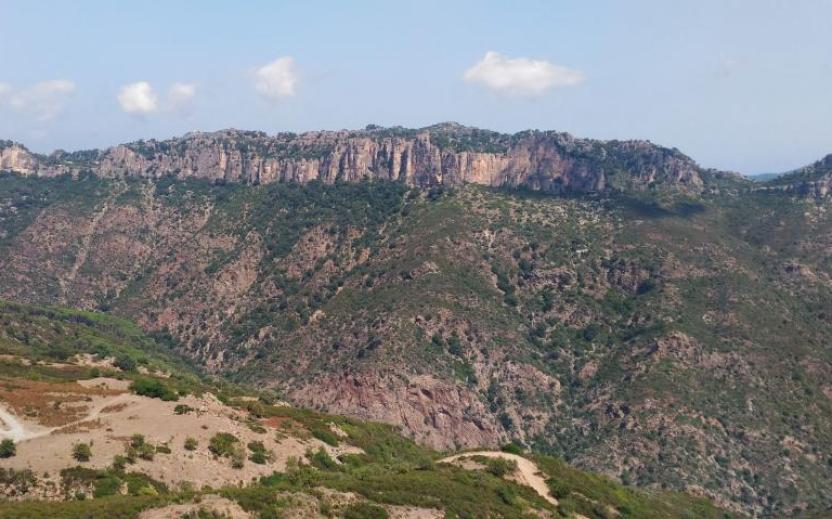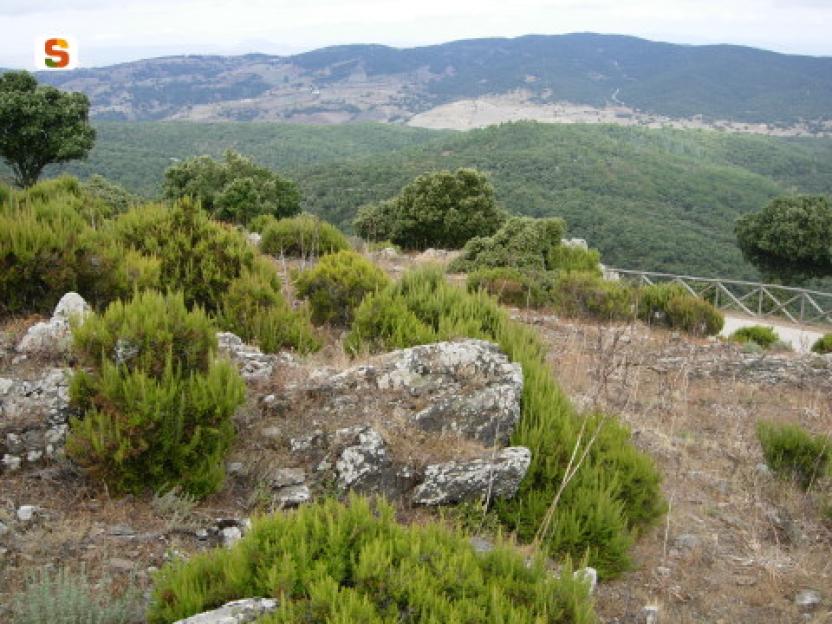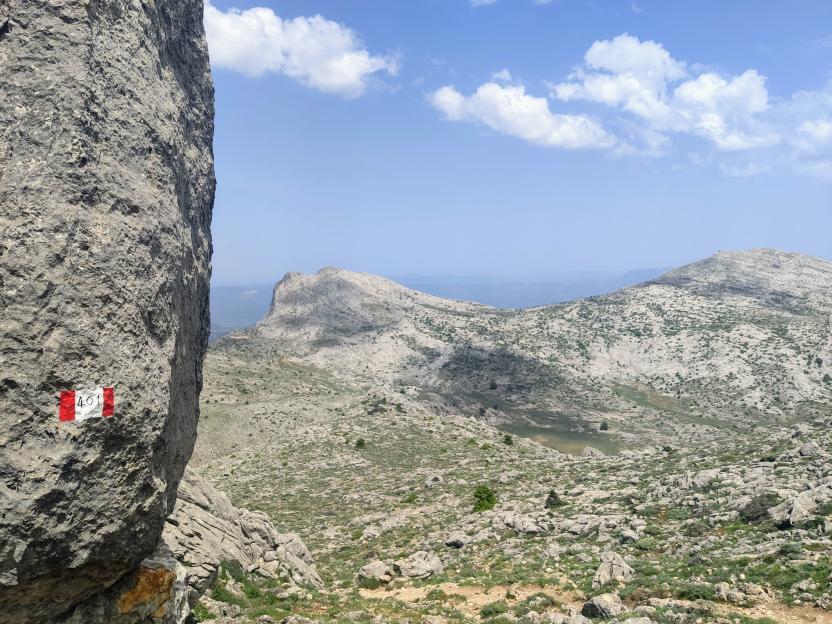Gadoni, Foresta Corongia. Between breccas and disterrus
Access
Depart from the centre of Gadoni along the SP2 in the direction of Seulo, then turning right onto the tarmac road in the direction of Funtana Raminosa. This beautiful road partly follows the miners' old route and runs alongside the allotments and orchards that they tended everyday, on their way to the mine, as they left the village. You gradually gain altitude, with increasingly broader views of the Flumendosa valleys, then you approach the buildings of the abandoned mine that occupies the Riu Saraxinus valley. The mining complex can be visited (www.visitgadoni.info) and a visit is highly recommended. Continue uphill for a few more kilometres until it ends, turning left and following the signs for Foresta Corongia on a partially unsurfaced road. When the road flattens out, you reach the Bauzzoni picnic area, where you leave the car.
Su Campalini
Continue on a dirt road on foot, ignoring some minor detours and turning left at the only obvious fork. Just below the road, reachable with some difficulty and unmarked, are the caves of Grutas de Perdu, with a scenic waterfall descending from the vault. The road you follow is now level, beneath a beautiful woodland area where you can identify the circular clearings, devoid of vegetation, where the charcoal burners built their threshing floors for the production of charcoal. Halfway along the long straight stretch, you come to a wooden signpost indicating Su Campalini: you leave the main dirt road and enter the woods, reaching the vertiginous edge of the Lartinatzu walls: here Foresta Corongia precipitates towards the Flumendosa riverbed and here stands a slender and bold rocky pinnacle, almost a bell tower, as its name in Sardinian seems to suggest.
Is Breccas
After a long panaoramic rest andbreak, you return to the dirt road continuing in a southerly direction until you come to a large fork in the road: Here you turn right, uphill, past a gate and continue on the main road. Soon the road becomes flat again, on clay soil and begins to skirt some unique isolated rock towers that become more and more numerous, until they form a veritable labyrinth of walls, caves, crevices and diaclasas. The area is known as Is Breccas and was the kingdom of shepherds and the bandit Torracorti, who lived over a century ago.
Su Pinneddu
Exploring the labyrinth of Is Breccas is worth every minute spent and various floristic endemisms can be recognised in the walls, as you walk along the slender paths that follow the audacious conformations of the rock. You then continue along a dirt road until it emerges from the forest: here, on the right, stands an isolated tower known as Su Pinneddu. The road joins a main dirt track which you follow to the right, beginning to descend and reaching, after a long stretch in the forest, the first fork encountered on the way. Here you turn left, shortly reaching the Bauzzoni area and the car.
Itinerary roadbook
- Log in to post comments





